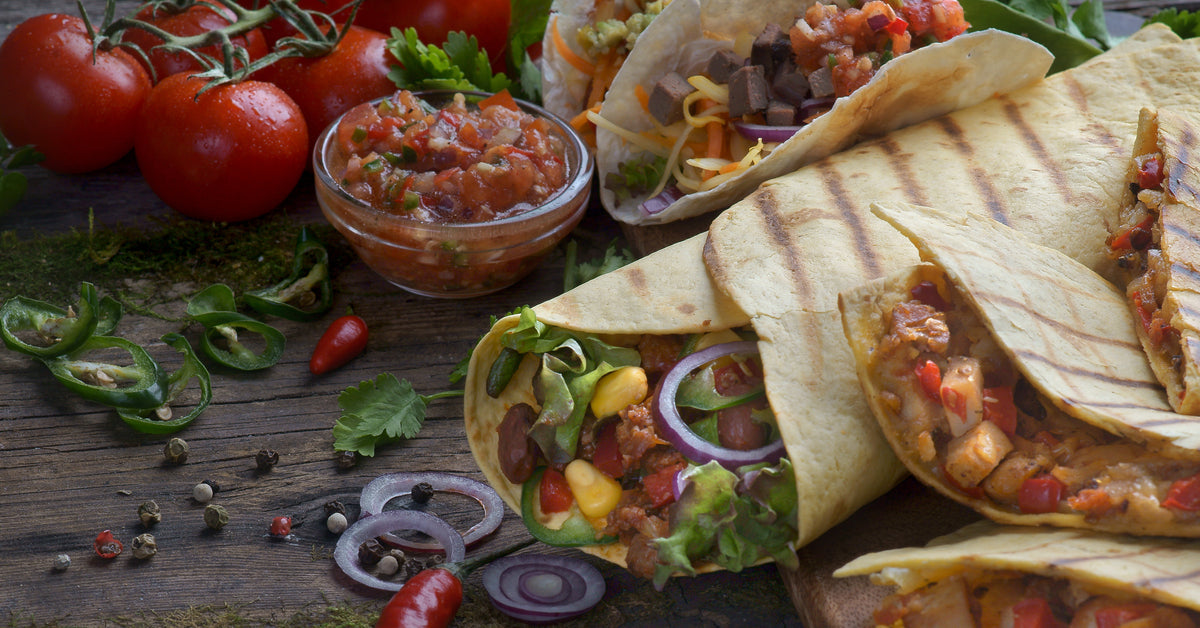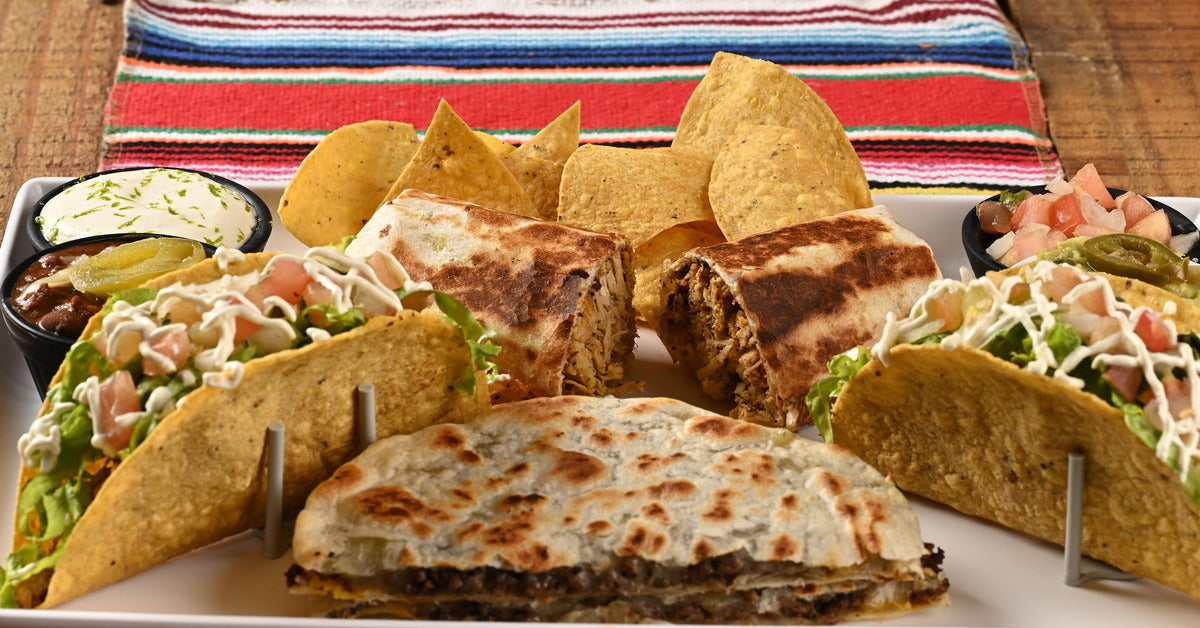Mexican cuisine offers a rich tapestry of flavors, textures, and aromas that are hard to resist. Understanding the nuances of popular dishes like burritos and quesadillas is enlightening for those exploring healthier eating options. Discover the differences between burritos and quesadillas to understand what makes these two excellent foods delicious.
Exploring the Origins of Burritos
Burritos have an interesting history that dates back to the early 20th century. Originating in Northern Mexico, burritos were simple tortillas filled with meat and beans. Over time, they evolved into the substantial, ingredient-rich wraps we know today.
The traditional burrito was a convenient meal for workers, providing a balanced combination of proteins, carbs, and fats. Burritos are an excellent option for those needing a nutritious, all-in-one meal. However, modern variations are sometimes calorie-dense, so choosing the right fillings is essential if you’re watching your caloric intake.
The Origins of Quesadillas
Like burritos, quesadillas originated from Mexico and typically consisted of corn tortillas filled with cheese. They were a staple food item long before the arrival of Europeans. “Quesadilla” comes from the Spanish word for cheese, “queso,” highlighting the dish’s primary ingredient.
Originally, people cooked quesadillas on a “comal,” a traditional flat griddle, which gave them a unique flavor and texture. Over time, various ingredients like meats, vegetables, and spices enhanced their versatility. Modern quesadillas, like ours at Rise & Puff, use gluten-free tortillas and low-fat cheese for those with dietary restrictions.
Quesadillas have maintained their traditional charm while adapting to contemporary tastes and dietary needs. This adaptability makes them a favorite among individuals across many countries.
Contrasting Portion Sizes

When it comes to portion sizes, burritos and quesadillas differ significantly. Burritos are generally larger with more filling, often serving as a complete meal. Their size makes them ideal for meal prepping and enjoying leftovers, a boon for those managing their calorie intake.
Quesadillas, in contrast, are usually smaller and lighter. They may be appetizers, snacks, or even part of a larger meal. This portion flexibility also improves calorie control by consuming less and satiating your appetite.
Wrapping Techniques
The wrapping techniques used for burritos and quesadillas further differentiate them. You typically roll burritos, creating a cylindrical shape that securely holds various fillings. This rolling method ensures that all ingredients are balanced and easy to eat on the go.
On the other hand, you fold quesadillas. You can fill and fold a single tortilla in half, creating a semi-circle. This technique results in a thinner, flatter dish that’s quick to cook and easy to handle.
Rolling a burrito requires a larger tortilla, which may add extra ingredients and calories. Folding a quesadilla, on the other hand, uses less dough, potentially making it a lighter option.
Filling Variations
The variety of fillings available for burritos and quesadillas is vast. Burritos typically include beans, meat, rice, cheese, and vegetables. This combination provides a balanced meal, and you can customize it to suit specific dietary needs. For instance, lean meats, whole grains, and plenty of veggies make a burrito a healthier choice.
Quesadillas often focus on cheese as the primary filling, with additional ingredients like meats, veggies, and herbs enhancing the flavor. Rise & Puff’s gourmet quesadillas make it easier to control portions and avoid overloading on high-calorie fillings.
Cheese Amount
Cheese is a key ingredient in burritos and quesadillas, but its role differs. Cheese is often one of many ingredients in burritos, adding flavor and texture without overwhelming the dish. This balance makes it easier to moderate cheese intake.
In quesadillas, cheese takes center stage. The gooey, melty inside is what makes quesadillas so irresistible. Meanwhile, the other ingredients become optional additions that accentuate the flavor. You can use low-calorie cheese and numerous other options to customize a meal that suits your dietary needs.
Cooking Methods

The cooking methods for burritos and quesadillas also set them apart. Grilling or baking a burrito is common, creating a crispy outer layer that contrasts with the soft fillings. This cooking technique adds texture and enhances the overall eating experience.
We typically toast quesadillas on a griddle or flat pan. This method ensures even cooking and produces a crispy, golden-brown exterior. The quick cooking time makes quesadillas a convenient option for busy days. For a faster option on the go, consider Rise & Puff’s frozen gourmet quesadillas to make a delicious meal in a few minutes on the stove.
Both cooking methods are adaptable to reduce calories and fat. Using non-stick pans or minimal oil achieves the desired results without compromising taste or texture.
Spices and Seasonings
Mexican cuisine has bold and vibrant flavors, and burritos and quesadillas showcase this beautifully. Burritos often feature a mix of spices, including cumin, chili powder, and garlic, creating a rich and complex flavor profile. These spices add depth and offer various health benefits, such as anti-inflammatory properties.
Quesadillas are equally flavorful. We season the cheese and additional fillings with herbs and spices, enhancing their taste. Fresh ingredients like cilantro, lime, and jalapeños elevate the flavor while keeping the dish light.
If you’re not used to spicy foods, choosing milder spices and incorporating fresh herbs provide flavor without the heat, making both dishes enjoyable and easily digestible.
Accompaniments
Every great meal needs delicious accompaniments. Pairing burritos and quesadillas with various salsas, guacamole, and other condiments enhances their flavors. These sides add taste and offer additional nutritional benefits.
Salsas from fresh tomatoes, onions, and peppers provide flavor without adding many calories. Guacamole, rich in healthier fats from avocados, complements burritos and quesadillas perfectly.
Other accompaniments like sour cream and pico de gallo enhance the dining experience. Using fresh, homemade salsas and limiting high-fat toppings keeps the meal nutritious and balanced.
Nutritional Comparison
Understanding the nutritional content of burritos and quesadillas is crucial for making informed dietary choices. With their larger size and multiple ingredients, burritos tend to be higher in calories. However, they also provide a balanced mix of proteins, carbs, and fats, making them a filling and nutritious option.
Quesadillas are generally lower in calories. Cheese is the primary source of calories in quesadillas, so choosing low-fat options reduces the overall calorie count. Both dishes meet specific dietary needs by selecting appropriate ingredients and portion sizes.
There are many differences between burritos and quesadillas. However, both dishes offer unique flavors, textures, and nutritional benefits that cater to different preferences and dietary needs.
Regardless of which food you prefer, a quality tortilla significantly affects its taste. Buy gourmet tortillas from Rise & Puff today and experience a new level of delicious cooking.

















Leave a comment
All comments are moderated before being published.
This site is protected by hCaptcha and the hCaptcha Privacy Policy and Terms of Service apply.